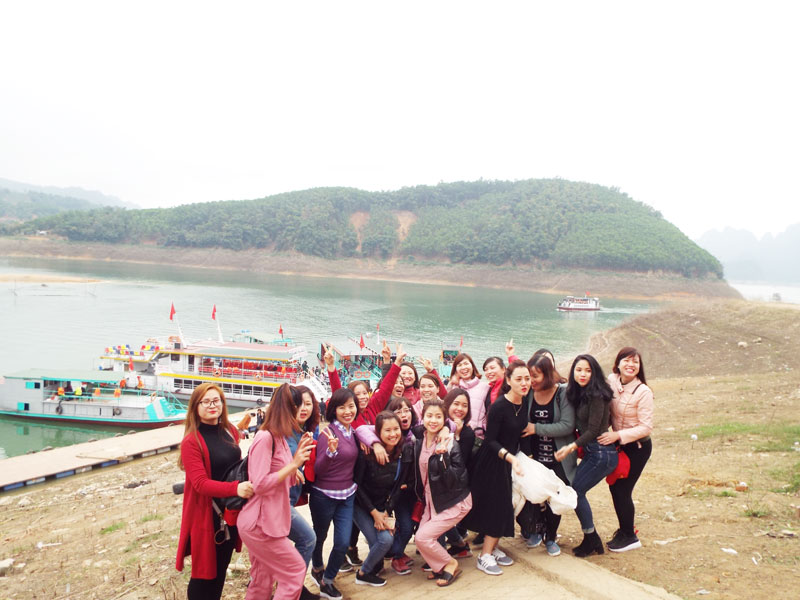



Dua Island located in Thung Nai Commune (Cao
Phong) attracts crowds of visitors to come.
Cao Phong district has two communes of Binh
Thanh and Thung Nai surrounding the lake. Each of the communes possesses the
superior advantage of natural sceneries, the unique cultural identity of Muong
ethnic people, the opportunity to build tours and tourism products to meet the
needs of visitors. Especially, Thung Nai commune has beautiful scenery, which
has been described as "Ha Long on the land", a harmonious and poetic
combination between mountain and forest scenes.
The area of Thung Nai Commune has formed many
tourist attractions, making it an attraction not to be missed. Dua Island with
over 10 hectares wide is being invested, recognized by the Provincial People's
Committee as a tourist attraction of the locality, providing an attractive
opportunity for tourists to enjoy the beautiful and poetic sceneries, the roof
houses of Muong, Dao ethnic people hidden in the dome of the trees on the
islands, on the peninsula of the lake.
Thac Bo Cave, Thung Nai Commune area is
located in Thac Bo God relics is an ideal destination known by many people,
attracting large number of visitors to the spiritual Bo Temple. In addition,
the villages and hamlets near the lake of Thung Nai, Binh Thanh communes also
have natural beautiful landscapes. The village also preserves unique culture in
the life of local people, creates the great potential for development of
community tourism types.
When exploring the reservoir of the lake,
going on the Highway 435 from Hoa Binh city to Binh Thanh and Thung Nai
communes, there are many famous tourist destinations. Giang Mo hamlet is an
ancient Muong ethnic village, with original scenery of pristine rice terraces
lined with golden yellow flowers, simplicity in the smoke spreading over each
stilt house, hidden in the forest. The people here are honest, friendly, and
easygoing. Giang Mo is a tourist attraction that attracts many international
and domestic tourist delegations.
There are 18 accommodation
establishments in the whole district with 144 rooms, of which 17 are guest
houses, and one community guesthouse. The facilities, equipment and basic rooms
are invested; the catering services are increasingly developed to meet the
needs of visitors. In the first 6 months of 2018, the number of visitors in the
district is estimated at 220,702 turns of visitors, including 600 international
visitors and 220,102 domestic visitors. The turnover from tourism industry is
estimated at over 15.8 billion VND.